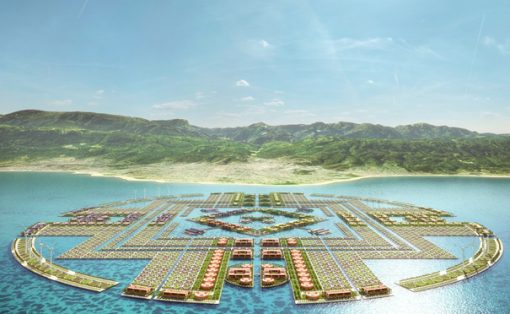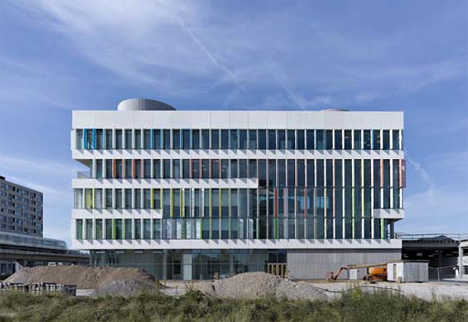
Mireia Luzárraga and Alejandro Muiño, founders of the Spanish studio Takk, recently designed and integrated a mobile child’s bedroom into their industrial apartment in Barcelona. The bedroom is for their six-year-old daughter Roma, and it is made using concrete blocks and recycled insulation. Roma’s Bedroom is placed inside the family’s 400-meter-square loft space. The mobile bedroom is raised on a wheeled base, and it can be moved around the apartment.
Designer: Mireia Luzárraga and Alejandro Muiño of Takk


The apartment’s layout is always consistently changing since Luzárraga and Muiño tend to build different architectural works. Roma wanted her own space, and the bedroom was the result of her request. According to the designers, the pitched roof and elevated foundation were her ideas, and hence they mimic a child’s drawing of a house. The bedroom includes a wheel foundation crafted from wood, with concrete blocks on top. The concrete blocks offer supports to a wooden enclosure that can be entered via wooden stairs and a little yellow door.


The bedroom includes operable white windows and bubble windows. The perimeter is lined with wooden panels on the inside. The other end of the structure includes a ladder that offers access to an exposed attic space. This space is hidden beneath the pitched roof. The exposed section and the enclosed bedroom are meant for sleeping but for different weather and climatic conditions.
“As part of adapting a 400-metre industrial space into a home, it became clear that it would be impossible to climate control the entire space without incurring significant economic and ecological costs,” said Takk.


The bedroom is made using waste materials from other previous projects. Materials such as concrete blocks, timber, drywall sheets, and recycled cotton insulation were used to line the exterior. This is a fairly common practice by Luzárraga and Muiño. They utilize recycled materials in quite a few residential projects to challenge the utility of traditional materials.
“It challenges modern design and architecture to address the climate crisis,” they said. “Despite the seemingly rigid and repetitive regulations regarding home spatial characteristics, this project aims to showcase the possibilities of renewal in the housing industry.”








